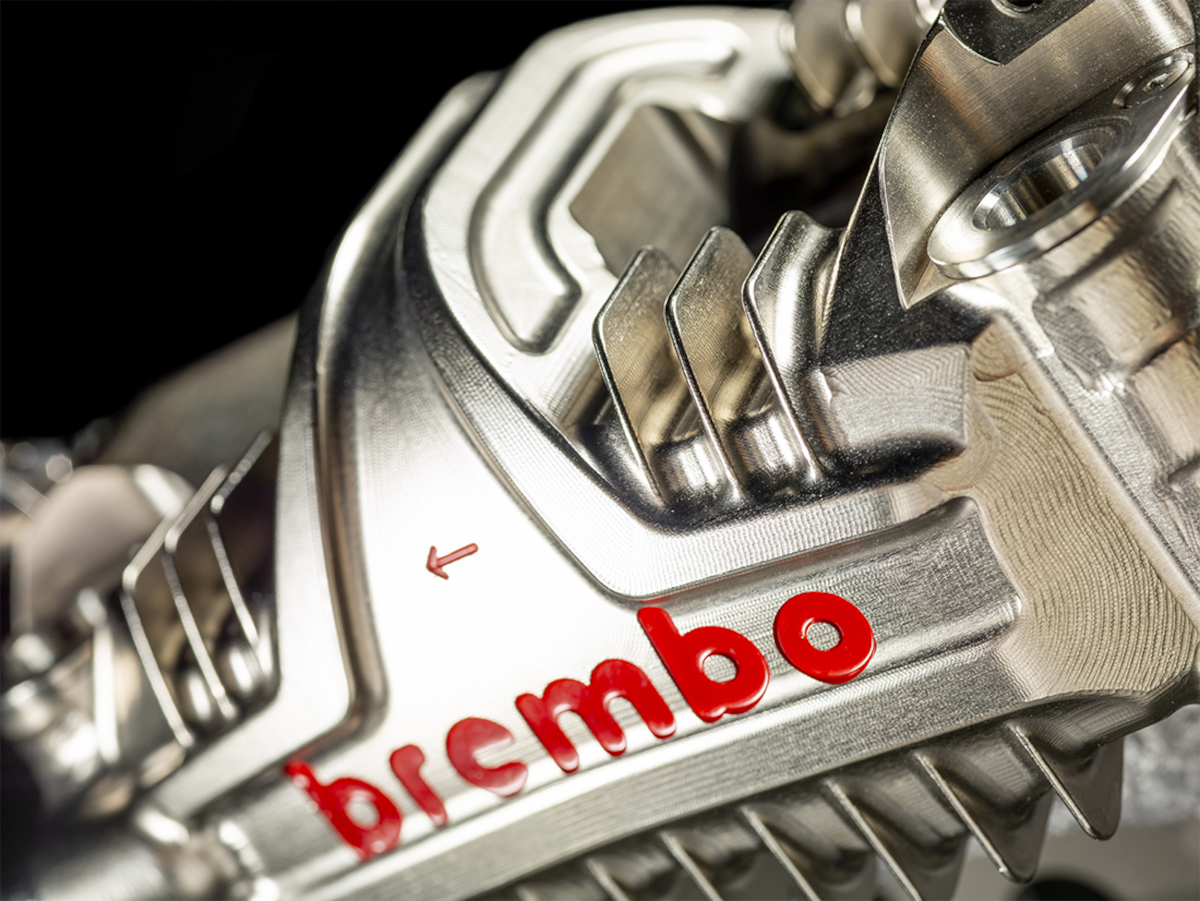The first problem is that the MotoGP machines will arrive at the Red Bull Ring with a very high temperature in their brakes, having raced at the Losail circuit just a few days earlier.
Thankfully, the temperatures on the two courses were not too far apart, but there was still a much difference between each track.
In Austria, the MotoGP riders will be racing clockwise, which explains everything that follows.
To keep working efficiently under these conditions, the Brembo technicians said they had to increase the braking power by around 15%, enough to offset the cooler track temperatures.
It would require increased hydraulic fluid pressure and friction material temperatures and reduced coolant and calliper operating temperatures.
For this reason, the technicians provide all the motorcycles with compounds that best match the situation at hand, given track temperature, time available to warm the brakes up.
They did the same for all the MotoGP riders in Austria at last weekend’s race.

After applying a specific compound, the most important thing is to learn how to make it reach its optimum performance level. It is something you can only learn through experience and by understanding how each compound works.
Let’s see, Brembo has to say.
Brembo brake pads for MotoGP up to 800°C (1,472°F)
The friction material used for Brembo MotoGP brake pads is carbon. The outstanding friction coefficient and constant performance when hot together guarantee powerful, even and stable braking without any fading (the “lengthening” of the lever or pedal).
Compared with the brakes of a sports bike for road use, the mass is different, along with the duration and even the maximum temperature.
The Brembo brake pads for MotoGP weigh just 50 grams (1.8 oz) – less than half the weight of the road-going version, whereas the duration is no higher than 900 km (560 miles) and the maximum temperature that can reach is 800°C (1,472°F).
The pads for street-legal bikes
For those who only use their bikes on the road, Brembo has four versions: the organic CC for softer and more modulated braking, the sintered SP (specifically for the rear wheel), SA and LA.
The one with the best performance is the SA, which increases as the pad heats up.
Unlike the LA and SA pads, the versions used on the track aren’t suitable for road use because their efficiency level at low temperatures is only average.
The best results come with the organic RC pads in carbon tech, available for all the feistiest supersport and naked bikes: one of its primary features is consistent performance, especially with high disc temperatures.
To remove any doubt about the suitable brake pads for your bike, check out our special report.
A trio of at least 200 km/h (124 mph)
From the start to the fourth bend of the Red Bull Ring, the braking system comes pushed to the limit; the only exception is on bend 2, where the change of direction means the brakes aren’t needed.
As these three braking sections are all on elbow bends, the speed drops by at least 200 km/h (124 mph) and the riders undergo a deceleration of 1.5 G.
On another three of the seven braking points at the Red Bull Ring, the speed reduction is less than 105 km/h (65 mph), and the deceleration is 1.1 G.
The riders apply an overall load of 31.8 kg (70 lb) on the brake lever during every lap, which means a total load of nearly 900 kg (0.99 tons) if we add together the load exerted by every driver from the starting line to the checkered flag.
Top values on the first corner
Four are hard on the brakes of the 7 Red Bull Ring braking points, whereas the other three are of medium difficulty.
The throttle-off point that produces the most significant speed gap is on the third bend: the bikes pass from 305 km/h (190 mph) to 61 km/h (38 mph) in 5.4 seconds, with a load of 4.6 kg (10 lb) on the lever and braking system pressure that reaches 9.8 bar.
via Brembo


































